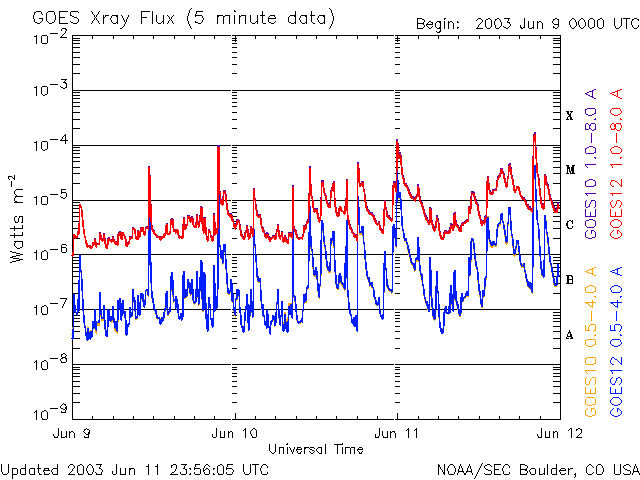
One of the GOES Satellites

One of the GOES Satellites
The GOES Satellites are operated by the NOAA and are best known for
their weather monitoring, but the satellites also carry
instruments for
monitoring the sun. Operating at an altitude of 35,000
Km, GOES measures x-rays,
energetic particles, and magnetic field with it's Space
Environment Monitor (SEM).
The x-ray
detectors are primarily for detecting solar flares, and they are
the source of my solar flare data. The X-ray instruments
use Ion chamber
detectors to measure x-ray fluxes for the 0.5-4 and 1-8
Angstrom wavelength
ranges. I used the 1.0 to 8.0 angstrom range for determining
flare energies,
which was more consistent with the way that flares are
usually classified.
X-ray photons pass through a collimater to restrict the
view, and then through a thin metallic
window which determines the low energy cutoff before
entering the ion chamber.
The spacecraft
spins and measures the solar emission once pers spin. The spin period is
0.6 seconds and the time resolution of the archive is
3.06 seconds

An Example of Data taken from the GOES Satellite. The blue
line represents the power flux that it is measuring in the
0.5 to 4.0 Angstrom range and the red line represents the powerflux
that it is measuring in the 1.0 to 8.0 Angstrom range.
The letters on the right hand side represent the classification of
flares. At this time there were some very large flares
(note the two X type flares on June 11th).